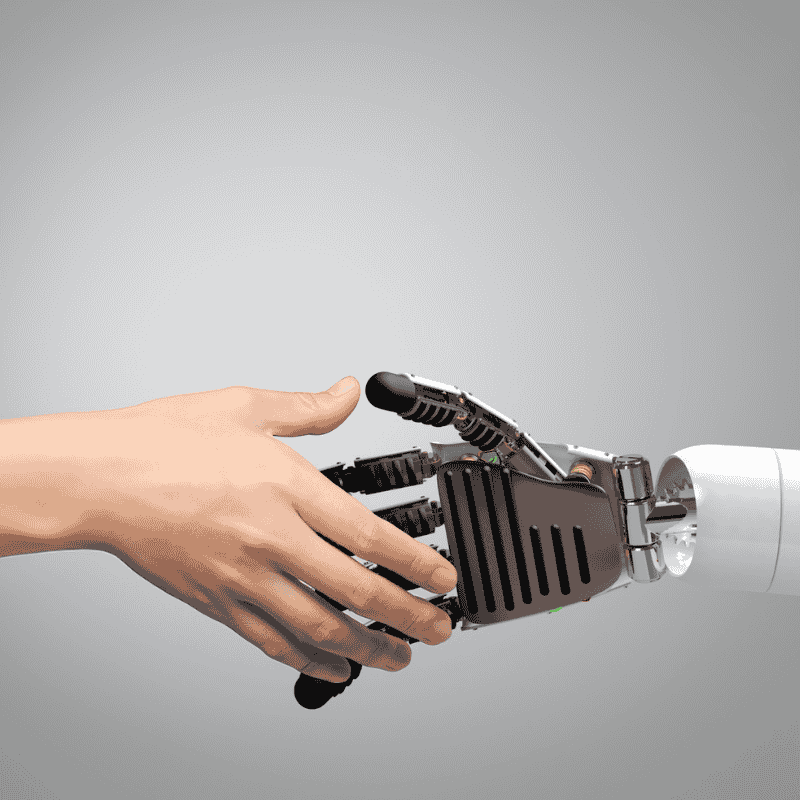AI for Repetitive Tasks: The Ultimate Guide to Streamlining Your Business According to How Can AI Agents Handle Repetitive Tasks Without, industry trends support these insights. According to The Power of AI: Automating Repetitive Tasks in Bu, industry trends support these insights.
AI for repetitive tasks has revolutionized how businesses operate in 2024. The best AI for repetitive tasks solutions are transforming mundane, time-consuming workflows into seamless, automated processes—freeing up your team to focus on innovation and growth. Whether it’s data entry, customer support, or inventory management, AI for repetitive tasks systems are proving to be a game-changing asset for companies of all sizes.
Imagine a world where your employees no longer waste hours on manual, repetitive duties. Instead, AI for repetitive tasks tools handle these operations with incredible speed and precision, reducing errors and boosting productivity. Studies show that businesses leveraging AI automation save up to 30% in operational costs while achieving breakthrough efficiency gains.
In this proven guide, we’ll explore:
- How AI automation works and why it’s essential for modern businesses
- The top AI-powered solutions for eliminating repetitive work
- Real-world examples of companies that have amazingly scaled their operations with AI
- Step-by-step strategies to implement AI-driven automation in your business
If you’re ready to unlock revolutionary efficiency and give your team the freedom to focus on high-impact work, keep reading. The future of business automation starts here!
AI for Repetitive Tasks Benefits: Unlocking Efficiency in Your Business
In today’s fast-paced business environment, repetitive tasks can be a significant drain on time, resources, and productivity. From data entry to customer service inquiries, these mundane activities often take employees away from more strategic, value-added work. This is where AI for repetitive tasks comes into play. By leveraging artificial intelligence, businesses can automate these routine processes, freeing up human talent for more meaningful contributions. But what exactly can AI do, and how can it benefit your business? Let’s dive in.
What Are AI for Repetitive Tasks Features?
AI-powered systems are designed to handle repetitive tasks with precision and consistency. These systems use machine learning, natural language processing (NLP), and robotic process automation (RPA) to perform tasks that would otherwise require manual effort. Here are some key features of AI for repetitive tasks:
- Automation of Routine Processes: AI can automate tasks like data entry, invoice processing, and report generation, reducing the risk of human error.
- Continuous Learning: Through adaptive algorithms, AI systems improve over time by learning from feedback and new data.
- 24/7 Availability: Unlike human employees, AI systems can work around the clock, ensuring tasks are completed without delays.
- Scalability: As your business grows, AI can handle increased workloads without the need for additional hires.
For example, a retail business might use AI to automate inventory management, ensuring stock levels are always accurate without manual oversight. Similarly, a healthcare provider could use AI to process patient records, freeing up staff to focus on patient care.
Why Should You Consider AI for Repetitive Tasks?
The advantages of AI for repetitive tasks extend far beyond just saving time. Here are some compelling reasons to integrate AI into your business operations:
- Cost Savings: By automating repetitive tasks, businesses can reduce labor costs and minimize errors, leading to significant financial savings.
- Improved Efficiency: AI systems complete tasks faster and more accurately than humans, streamlining workflows and boosting productivity.
- Enhanced Employee Satisfaction: Freeing employees from monotonous tasks allows them to focus on creative and strategic work, leading to higher job satisfaction.
- Better Decision-Making: AI systems can analyze vast amounts of data quickly, providing insights that help businesses make informed decisions.
Real-World Applications of AI for Repetitive Tasks
To better understand the impact of AI, let’s look at some real-world examples:
- Customer Service: AI-powered chatbots can handle customer inquiries, resolve common issues, and even process orders, providing a seamless experience for users.
- Finance and Accounting: AI can automate invoice processing, expense tracking, and financial reporting, reducing the burden on accounting teams.
- Human Resources: From resume screening to employee onboarding, AI can streamline HR processes, saving time and improving candidate experiences.
For instance, a small e-commerce business might use AI to automate order tracking and customer support, ensuring timely responses and reducing the workload on their team.
Addressing Common Pain Points
Many business owners hesitate to adopt AI due to concerns about cost, complexity, or ethical considerations. However, modern AI tools are more accessible than ever. Here’s how to overcome these challenges:
- Cost-Effective Solutions: Many AI tools are affordable and scalable, making them suitable for small and medium-sized businesses.
- User-Friendly Interfaces: Platforms like Zapier and UiPath offer intuitive interfaces that require little to no technical expertise.
- Ethical AI Practices: By choosing transparent and responsible AI solutions, businesses can ensure ethical use of automation technologies.
Additionally, businesses can start small by automating one or two tasks and gradually expanding their use of AI as they see results.
The Future of AI for Repetitive Tasks
As AI technology continues to evolve, its potential to transform business operations grows exponentially. From predictive analytics to advanced automation, the possibilities are endless. By embracing AI for repetitive tasks, businesses can stay ahead of the competition, improve efficiency, and unlock new opportunities for growth.
If you’re ready to explore how AI can benefit your business, check out our guide on [How to Automate Workflows with AI](insert-link) or dive into our case studies on [AI Automation Success Stories](insert-link). The future of business efficiency is here—don’t get left behind.
How AI for Repetitive Tasks Can Transform Your Business
AI for repetitive tasks is revolutionizing the way businesses operate by automating mundane, time-consuming processes. Whether it’s data entry, customer service, or inventory management, AI-powered tools can handle these duties with precision and efficiency, freeing up your team to focus on higher-value activities. In this section, we’ll explore the top AI for repetitive tasks, compare their features, and provide actionable tips for implementation.
Top AI Tools for Repetitive Tasks: A Comparison
When choosing the best AI for repetitive tasks, it’s essential to consider your business needs, budget, and technical expertise. Here’s a comparison of three leading tools:
| Tool | Key Features | Best For | Pricing |
|————————|———————————————————————————|———————————-|————————–|
| Zapier | workflow automation, 5,000+ app integrations, user-friendly interface | Small to medium businesses | Starts at $19.99/month |
| UiPath | Robotic Process Automation (RPA), AI-powered analytics, enterprise-grade security| Large enterprises | Custom pricing |
| Automation Anywhere| Cloud-based RPA, AI-driven decision-making, scalable solutions | Mid-sized to large businesses | Custom pricing |
Zapier is ideal for businesses looking for an easy-to-use, cost-effective solution, while UiPath and Automation Anywhere cater to enterprises needing advanced AI capabilities.
Practical Applications of AI for Repetitive Tasks
- Customer Service Automation
AI-powered chatbots can handle FAQs, process orders, and resolve common issues, reducing response times by up to 80%. For example, a retail business using AI chatbots saw a 30% increase in customer satisfaction.
- Data Entry and Management
Tools like UiPath can automate data extraction from documents, reducing errors and saving hours of manual work. A case study showed that a logistics company cut data processing time by 50% using AI.
- Inventory Management
AI systems can monitor stock levels, predict demand, and reorder products automatically. This ensures optimal inventory levels and prevents overstocking or stockouts.
Actionable Tips for Implementing AI for Repetitive Tasks
- Start Small
Begin with a single process, such as automating email responses or scheduling, to test the effectiveness of AI tools.
- Choose the Right Tool
Evaluate your business needs and select the best AI for repetitive tasks. For example, Zapier is great for workflow automation, while UiPath excels in complex RPA.
- Train Your Team
Ensure your team understands how to use AI tools effectively. Many providers offer tutorials and customer support to ease the learning curve.
- Monitor and Optimize
Regularly review the performance of your AI systems and make adjustments to improve efficiency.
Addressing Common Concerns
Many business owners worry about the cost and complexity of implementing AI for repetitive tasks. However, tools like Zapier offer affordable plans, and most platforms provide user-friendly interfaces. Moreover, the long-term cost savings and productivity gains often outweigh the initial investment.
Conclusion
AI for repetitive tasks is no longer a luxury but a necessity for businesses aiming to stay competitive. By leveraging the top AI for repetitive tasks, you can streamline operations, reduce costs, and enhance productivity. Start exploring these tools today and take the first step toward transforming your business.
Implementing AI for Repetitive Tasks: A Step-by-Step Guide
AI for repetitive tasks is revolutionizing how businesses operate by automating mundane workflows, reducing errors, and improving efficiency. Whether you’re a small business owner or an enterprise leader, integrating AI into your processes can save time and resources. Below, we’ll walk you through a structured approach to AI for repetitive tasks setup, including best practices, common pitfalls, and real-world examples.
Step 1: Identify Repetitive Tasks for Automation
Before implementing AI for repetitive tasks, audit your business processes to determine which tasks are rule-based and time-consuming. Common candidates include:
- Data entry & invoice processing
- Customer support responses (chatbots, email sorting)
- Inventory management & order tracking
- Report generation & data analysis
Best Practice: Use workflow mapping tools like Lucidchart or Trello to visualize repetitive tasks before automation.
Step 2: Choose the Right AI Automation Tool
Not all AI solutions are equal. Depending on your needs, consider:
- No-Code AI Automation (Zapier, Make.com) – Best for simple workflows (e.g., auto-responding to emails).
- AI-Powered RPA (UiPath, Automation Anywhere) – Ideal for complex, rule-based tasks (e.g., invoice processing).
- custom AI Models (Python + OpenAI API) – For businesses needing tailored automation (e.g., predictive inventory management).
Example: A retail business could use Zapier’s AI automation to sync eCommerce orders with inventory databases, eliminating manual updates.
Step 3: Configure & Train Your AI Model
Once you’ve selected a tool, follow these steps for AI for repetitive tasks integration:
- Define Triggers & Actions (e.g., “When a new order comes in, update stock levels”).
- Input Historical Data (if using machine learning) to improve accuracy.
- Test in a Sandbox Environment before full deployment.
Common Mistake: Skipping testing can lead to errors in live workflows. Always validate with sample data first.
Step 4: Monitor & Optimize Performance
After launch, track key success metrics:
- Time saved per task (e.g., reduced data entry from 2 hours to 10 minutes).
- Error rate reduction (e.g., fewer mislabeled invoices).
- ROI calculation (compare labor costs before and after AI automation).
Troubleshooting Tip: If the AI model underperforms, refine training data or adjust workflow rules.
Expected Outcomes of AI for Repetitive Tasks
Businesses that successfully automate report:
- 50-70% faster task completion (McKinsey).
- 30%+ cost savings from reduced manual labor.
- Higher employee satisfaction (staff focus on strategic work).
Final Takeaway: AI for repetitive tasks isn’t just about cutting costs—it’s about scaling efficiently. By following this guide, you can implement AI automation with confidence and measurable results.
Next Steps: Explore industry-specific AI tools or consult an AI integration specialist for advanced customization.
What are AI for repetitive tasks?
AI for repetitive tasks refers to artificial intelligence systems designed to automate routine, time-consuming activities in business operations. These systems use machine learning, natural language processing (NLP), and robotic process automation (RPA) to perform tasks like data entry, customer service, and scheduling without human intervention. For example, AI-powered chatbots can handle customer inquiries, while RPA tools can process invoices. By leveraging AI for repetitive tasks, businesses can improve efficiency, reduce errors, and free up employees for more strategic work.
How much do AI for repetitive tasks cost?
The cost of AI for repetitive tasks varies based on the complexity and scale of the solution. Basic tools like AI chatbots or workflow automation software can start at $20-$50 per month, while advanced enterprise-level RPA platforms like UiPath or Automation Anywhere can cost thousands annually. Open-source AI tools are also available for businesses with limited budgets. When considering AI for repetitive tasks cost, factor in implementation, training, and maintenance expenses. Many providers offer free trials or tiered pricing, making it easier to find a solution that fits your budget.
How to implement AI for repetitive tasks?
Implementing AI for repetitive tasks involves four key steps:
- Identify Tasks: Pinpoint repetitive, rule-based tasks like data entry or email sorting.
- Choose Tools: Select AI tools like Zapier for workflow automation or ChatGPT for customer service.
- Integrate Systems: Connect AI tools with your existing software (e.g., CRM or ERP systems).
- Monitor and Optimize: Continuously track performance and refine the AI system using feedback. For example, a retail business could use AI to automate inventory updates, saving hours of manual work.
What are the benefits of AI for repetitive tasks?
The benefits of AI for repetitive tasks include increased efficiency, cost savings, and improved accuracy. AI systems can work 24/7 without fatigue, ensuring consistent performance. For instance, AI-powered chatbots can handle 80% of customer inquiries, reducing response times by 50%. Additionally, automating tasks like payroll processing minimizes human errors. Businesses also save on labor costs, as AI can replace or augment manual efforts. These benefits make AI for repetitive tasks a valuable investment for companies of all sizes.
Which AI for repetitive tasks are best for small businesses?
For small businesses, affordable and user-friendly AI tools are ideal. Zapier is excellent for automating workflows between apps, while tools like HubSpot’s AI chatbot can enhance customer service. For data-heavy tasks, platforms like Microsoft Power Automate offer cost-effective solutions. Small businesses should prioritize tools with low upfront costs, easy integration, and scalability. For example, a local retailer could use AI to automate inventory tracking, ensuring stock levels are always accurate without manual oversight.
What are common challenges with AI for repetitive tasks?
Common challenges include high initial costs, technical complexity, and resistance to change. Small businesses may struggle with the upfront investment in AI for repetitive tasks, while others may find integration with legacy systems difficult. Additionally, employees may fear job displacement. To overcome these challenges, start with small-scale implementations, provide training, and communicate the benefits of AI. For example, a healthcare clinic could pilot an AI scheduling tool to demonstrate its time-saving potential before full adoption.
What is the future of AI for repetitive tasks?
The future of AI for repetitive tasks is promising, with advancements in machine learning and NLP driving innovation. AI systems will become more intuitive, capable of handling complex tasks like decision-making and predictive analysis. Industry-specific solutions will also emerge, catering to unique needs in healthcare, retail, and education. As AI becomes more accessible, even small businesses will benefit from cost-effective automation tools. By staying updated on trends, businesses can leverage AI for repetitive tasks to remain competitive and efficient.
Conclusion: Streamline Your Business with AI for Repetitive Tasks
AI for repetitive tasks isn’t just a trend—it’s a game-changer for businesses looking to boost efficiency, cut costs, and free up valuable human resources. As we’ve explored, AI-powered automation can handle everything from customer service inquiries to data entry, project management, and beyond. By leveraging machine learning and adaptive algorithms, these systems work tirelessly to ensure accuracy, speed, and scalability—giving your team the freedom to focus on high-impact strategic work.
The benefits are undeniable: reduced operational costs, fewer human errors, and the ability to scale workflows effortlessly. Whether you’re a small business or an enterprise, integrating AI for repetitive tasks can deliver immediate ROI while future-proofing your operations. Worried about implementation? Start small with tools like chatbots or automated scheduling, then expand as you see results.
The future of business lies in smart automation, and the time to act is now. Competitors are already adopting AI for repetitive tasks to gain an edge—don’t let your business fall behind. Ready to transform your workflow? [Explore our AI automation guide](internal-link) or [schedule a consultation](internal-link) to discover the best solutions for your needs.
Take the first step today—automate, optimize, and outpace the competition with AI!






0 Comments